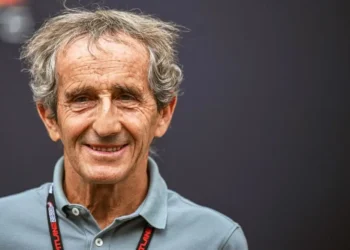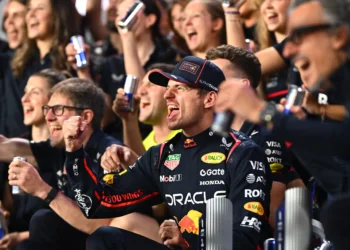In the past, safety in Formula 1 was not a priority, as the thrill and glamour of racing took precedence. Unfortunately, fatalities were seen as a normal part of the game. However, as drivers and engineers began to advocate for safety, the outlook began to change. Today, safety measures are an essential part of Formula 1, just like the powerful engines that drive the cars. Similarly, the approach to online gaming has also evolved, with platforms like Lucky Jet Casino ensuring a safe and fun experience for users.
This report explores the significant milestones in the development of safety in Formula 1, highlighting how each innovation has contributed to making the sport and other high-speed platforms safer for participants. In the early days of Formula 1, especially during the 1950s and 1960s, safety measures were minimal. Protective equipment was basic and the focus was mainly on speed rather than safety. Race circuits lacked proper barriers and medical facilities were inadequate. This era was marked by a lack of comprehensive safety protocols, leading to a high number of fatal accidents and earning the sport a reputation for its dangers.
The 1970s proved to be a crucial period for safety in Formula 1. The alarming rate of fatalities and serious injuries prompted a significant shift in mindset. Influential drivers like Jackie Stewart led the movement towards greater safety. They advocated for improvements in protective gear, the introduction of safety barriers, fireproof suits, and helmets capable of withstanding strong impacts. This decade witnessed the implementation of crucial safety features, such as mandatory seat belts and standardized helmet designs.
These reforms laid the groundwork for a more systematic approach to safety in racing and began a continuous effort to make the sport as safe as it is today. Although motorsport always involves risks, advances in safety have significantly reduced the fatality rate.
The following two decades were marked by significant technological advances and the implementation of strict safety regulations. In the 1980s, there was a shift towards the use of carbon fiber monocoques, an innovative design that greatly improved the strength and stability of race cars.
During this period, Formula 1 vehicles were also required to undergo crash tests to ensure that only cars capable of withstanding severe impacts were allowed on the track.
In the 1990s, additional improvements were made. The introduction of the survival cell, a highly durable compartment designed to protect drivers during accidents, became a standard practice. Furthermore, race tracks were redesigned to include better runoff areas and more advanced barrier systems, reducing the risk of injuries in accidents.
These changes, driven by both technological innovation and regulatory requirements, significantly improved the safety of drivers and set new standards in the sport.
As we entered the new millennium, one of the most important safety innovations in Formula 1 was introduced – the Head and Neck Support (HANS) device. In the early 2000s, the HANS device played a crucial role in reducing the risk of head and neck injuries, which were common in high-speed accidents.
This device, which connects the pilot’s helmet to their shoulders, limits excessive head movement during collisions, thus reducing the chances of injuries to the cervical spine.
Despite initial resistance due to discomfort and restricted movement, the HANS device soon became mandatory and has been credited with saving countless lives on the track.
In 2018, another significant milestone in driver safety was achieved with the introduction of the halo device. Made of titanium, this structure forms a protective barrier around the pilot’s head, deflecting debris and withstanding strong impacts.
Similar to the HANS device, the halo faced initial skepticism, with concerns raised about visibility and aesthetics. However, its effectiveness was proven in several incidents where pilots escaped potentially fatal accidents without injuries.
Alongside physical safety measures, the 2010s also witnessed advances in virtual safety technologies. The use of virtual safety cars and advanced simulation tools allowed race controllers to effectively manage race conditions, reducing the risk of accidents by controlling the speed of cars in caution conditions without the need for a physical safety car on the track.
In recent years, Formula 1 has been at the forefront of advances in safety technology and data analysis, with a special emphasis on improving the well-being of drivers. The introduction of biometric gloves, which monitor vital signs and provide real-time health data during races, is just one example of the sport’s commitment to innovation. Furthermore, the use of telemetry and real-time data analysis allows teams and race officials to closely monitor the condition of cars and drivers, enabling faster responses to accidents.
Looking to the future, Formula 1 is poised to adopt even more sophisticated safety technologies. The integration of artificial intelligence and machine learning is expected to play a significant role in predicting and preventing accidents before they occur. Additionally, ongoing advances in materials science have the potential to offer even safer and more durable protective equipment and car components.
Throughout its history, Formula 1 has experienced several high-profile incidents that have significantly influenced its approach to safety. These case studies not only highlight the inherent dangers of motorsport, but also emphasize the ongoing need for advances in safety technology.
One such incident is the tragic accident that claimed the life of Ayrton Senna during the 1994 San Marino Grand Prix in Imola. Senna, a beloved and highly talented driver, was at the center of this pivotal moment for the sport. His untimely death accelerated the implementation of various safety protocols, including track redesigns and the mandatory use of enhanced helmets and safety equipment.
Another important incident occurred in 2014, when Jules Bianchi suffered a fatal accident during the Japanese Grand Prix in rainy conditions. This accident led to significant changes in race protocols during adverse weather conditions. It resulted in the development and implementation of the virtual safety car, which slows down speeds overall to increase safety during dangerous situations.
These incidents, along with others, serve as stark reminders of the inherent risks in high-speed racing and the ongoing need for advances in safety technology.
The journey of safety in Formula 1 is a testament to the sport’s resilience and its capacity for innovation. Each decade has witnessed layers of improvements, driven by both tragedy and technological advancements.
The commitment to safety is evident in all aspects of Formula 1, from the design of cars and equipment to the establishment of regulations and track layouts. As the sport continues to evolve, the focus on safety remains unwavering, ensuring that the thrill of racing can be enjoyed with the utmost confidence that every possible measure is taken to protect the daring drivers who push the limits of speed.
© 2024
Portugal wins the Eurocup final in an exciting match against France
The Portuguese national football team won the 2024 Eurocup in an exciting match against France. The game, which took place at Wembley Stadium in London, ended in a 2-2 draw in regular time, leading to extra time. With a goal from Cristiano Ronaldo in the 108th minute, Portugal secured the victory and the title.
The match started with France opening the scoring at 15 minutes into the first half, with a goal from Mbappé. Portugal reacted quickly and equalized at 24 minutes, with a goal from Bernardo Silva. The game continued balanced, with chances for both teams, but neither managed to score again before halftime.
In the second half, France took the lead again at 58 minutes, with a goal from Griezmann. Portugal didn’t give up and sought the equalizer once more, at 63 minutes, with a goal from Diogo Jota. With the draw persisting until the end of regular time, the match went into extra time.
In extra time, both teams had opportunities to score, but it was Cristiano Ronaldo who decided the game at 108 minutes. The Portuguese forward took advantage of a cross in the area and headed into the back of the net, securing the victory for Portugal.
With this triumph, Portugal becomes a two-time champion of the Euro Cup, repeating the feat of 2016. The Portuguese national team showed determination and grit throughout the tournament, overcoming tough opponents and displaying high-level football. The victory in the final against France crowns the team’s excellent performance and fills Portuguese fans with pride.










